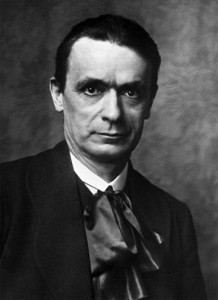In the last decades of the nineteenth century, a yearning for spiritual nourishment arose within European souls, so that the artistic works of Richard Wagner and the writings of Madame H. P. Blavatsky, among others, became popular. Organizations such as the Giordano Bruno League and the Theosophical Society subsequently appeared, and into these surroundings Rudolf Steiner’s anthroposophic movement came into being. Already during the last two decades of the nineteenth century the Austrian-born Rudolf Steiner (1861–1925) had become a respected and well-published scientific, literary, and philosophical scholar, particularly known for his work on Goethe’s scientific writings. After the turn of the century, Steiner developed his philosophical principles into an approach to methodical research of psychological and spiritual phenomena which became known as Spiritual Science.
Steiner (1861–1925) had become a respected and well-published scientific, literary, and philosophical scholar, particularly known for his work on Goethe’s scientific writings. After the turn of the century, Steiner developed his philosophical principles into an approach to methodical research of psychological and spiritual phenomena which became known as Spiritual Science.
Steiner becomes the great Initiate of the Twentieth Century. His multi-faceted genius led to innovative and holistic approaches in medicine, science, education (Waldorf schools), special education, philosophy, religion, economics, Biodynamic agriculture, architecture, drama, the new art of eurythmy, and other fields. In 1924 he founded the General Anthroposophical Society, which today has branches throughout the world. For more on Rudolf Steiner, check this website and this article by Prof. Fred Amrine.
Skip to content
